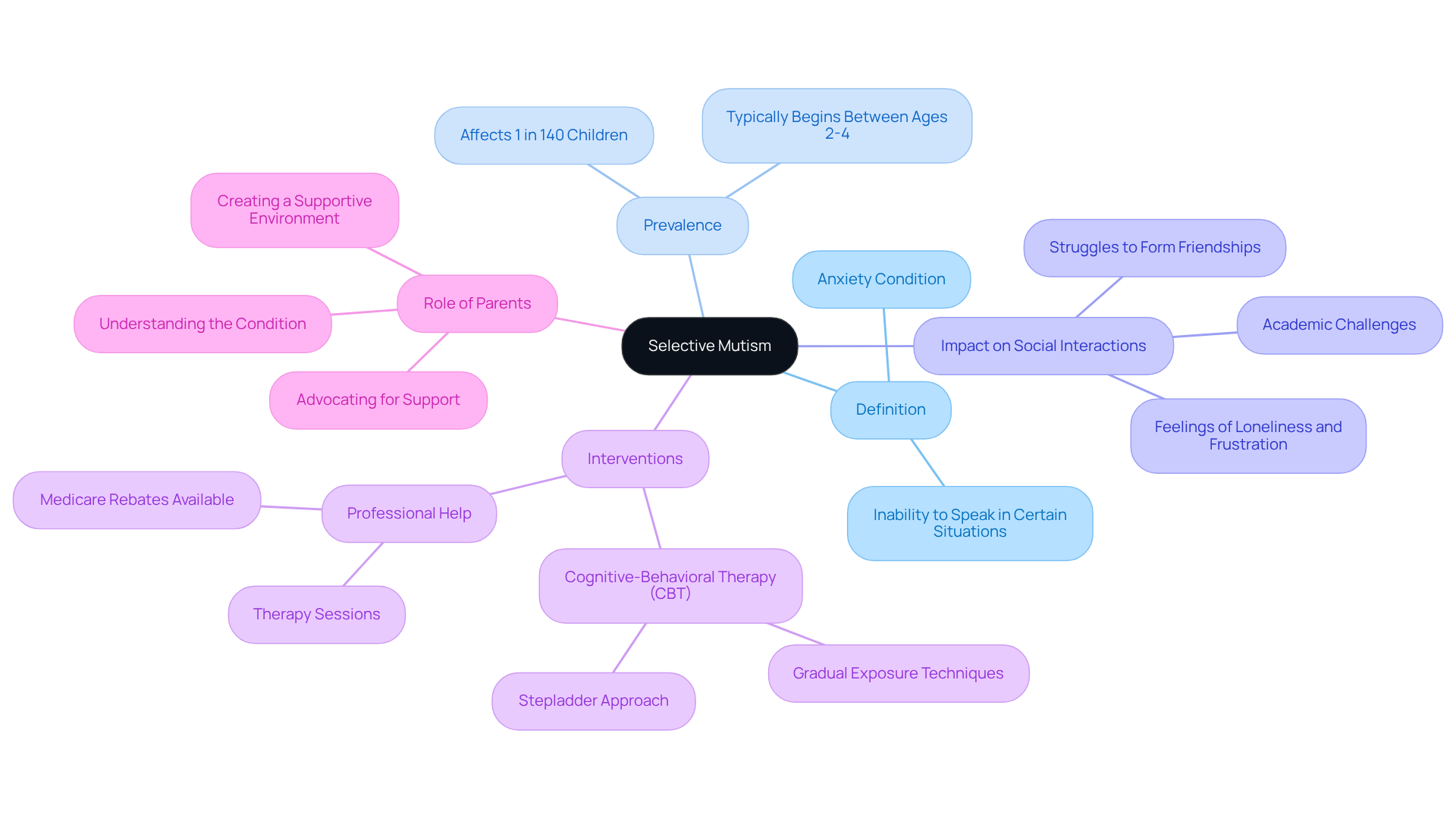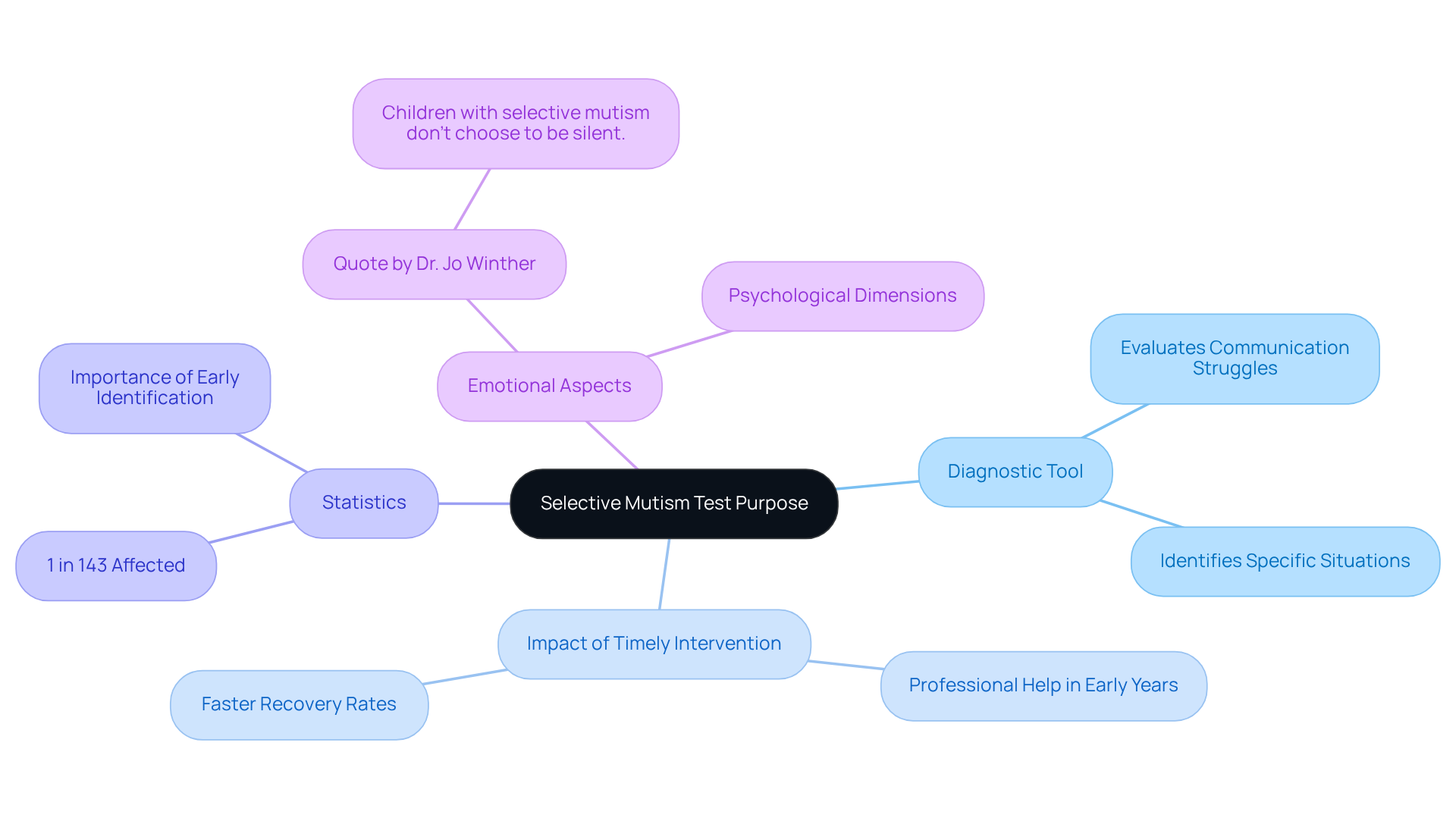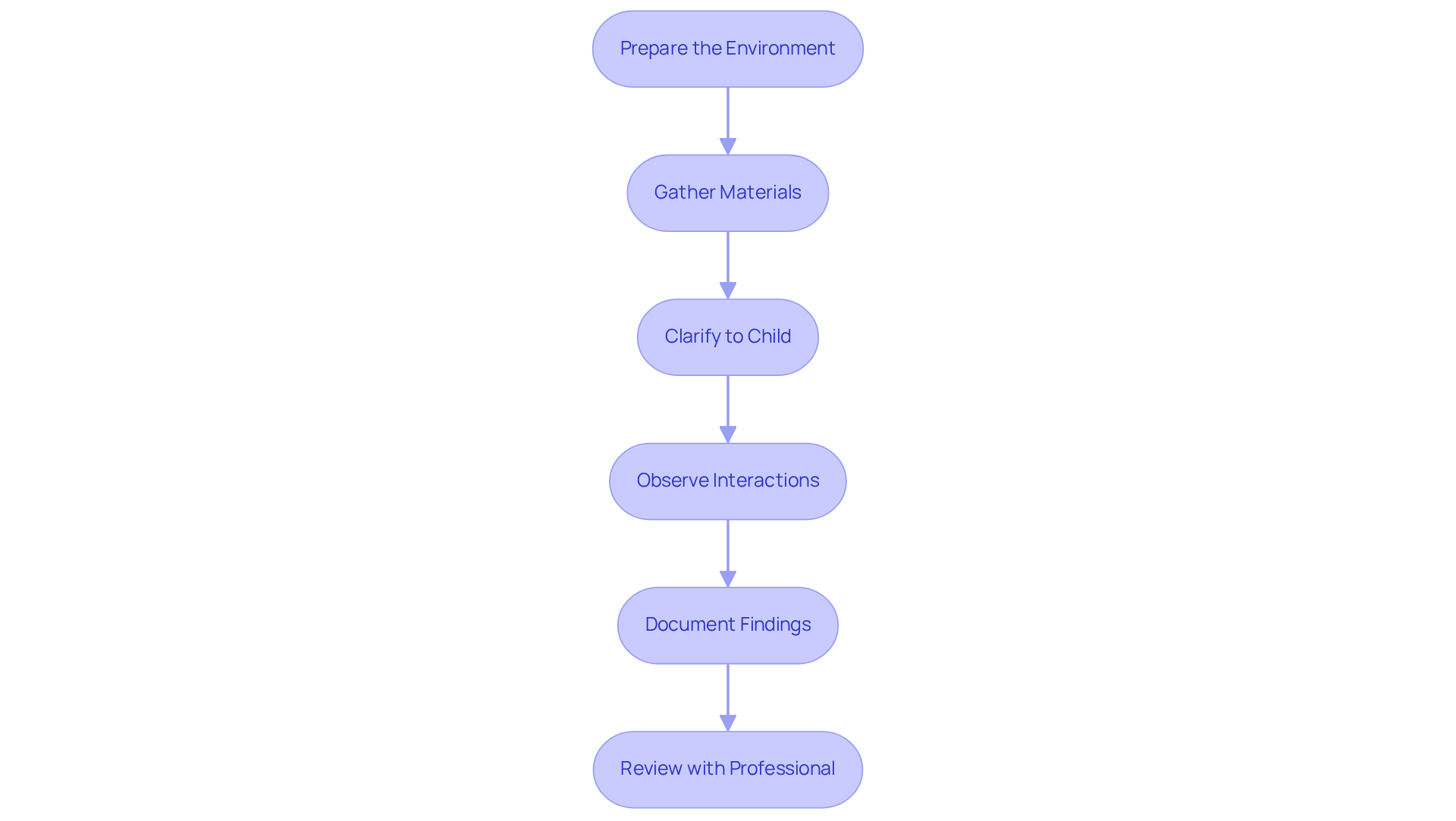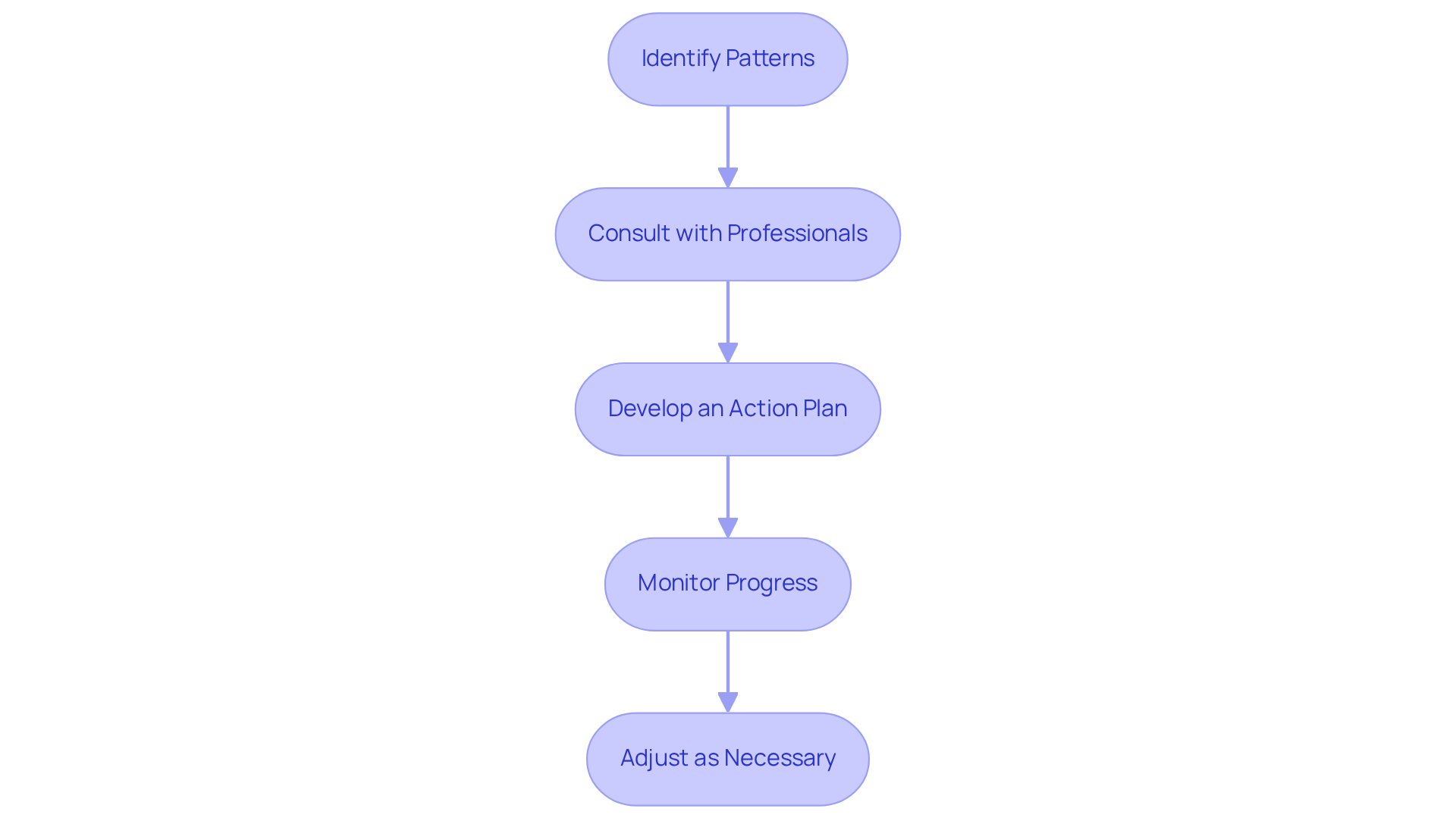Overview
This article highlights how parents can effectively navigate the selective mutism test to support their children facing this anxiety condition. It underscores the significance of fostering a nurturing environment, adhering to structured steps for administering the test, and working alongside professionals to develop personalized intervention strategies. These approaches can profoundly enhance children's communication skills and overall emotional well-being. By understanding the challenges and taking proactive steps, parents can create a foundation of support that empowers their children to thrive.
Introduction
Understanding selective mutism is essential for parents who are navigating the complex emotional landscape of their child's silence in social situations. This anxiety-driven condition, which affects approximately one in 140 children, can significantly hinder social interactions and academic performance. Therefore, early intervention is vital.
As parents explore the selective mutism test, they not only uncover insights into their child's unique challenges but also gain the tools necessary to advocate for effective support.
What steps can parents take to ensure their child feels understood and empowered to communicate, despite the daunting silence?
Define Selective Mutism and Its Impact on Children
Selective non-speaking is a challenging anxiety condition that primarily affects young individuals, typically beginning between the ages of two and four. It presents as a consistent inability to speak in certain social situations, even though these children can communicate freely in more comfortable settings, like at home. This condition can significantly influence a young person's social interactions, academic success, and emotional health. Studies indicate that this specific speech inhibition affects approximately one in 140 young individuals, highlighting its prevalence and the need for awareness.
Children with selective mutism may often seem shy or withdrawn; however, their silence is usually rooted in anxiety rather than a lack of desire to engage. It’s crucial for parents to understand that prompt intervention can make a difference. Youngsters who receive timely assistance often recover more swiftly and effectively. Cognitive-behavioral therapy (CBT) techniques, including the stepladder approach and gradual exposure to speaking situations, have shown promising results in helping these young individuals overcome their fears.
Moreover, children with selective mutism might struggle to form friendships and participate in classroom activities, leading to feelings of loneliness and frustration. Understanding the nuances of this condition is vital for parents, as it empowers them to advocate for their child's needs and seek appropriate resources and support to enhance their communication skills and confidence in social settings. Parents should also be mindful that Medicare rebates are available for therapy sessions, providing financial assistance for treatment.
Recognizing the emotional toll of selective non-speaking, including feelings of shame and embarrassment, is essential for fostering a supportive environment for affected youth. By creating a nurturing atmosphere, parents can help their children navigate these challenges, ultimately paving the way for better communication and social engagement.

Explain the Purpose and Importance of the Selective Mutism Test
The sutism test serves as a vital diagnostic tool, evaluating how selective mutism affects a young person's daily life. This sutism test helps experts identify specific situations where the child struggles to communicate, providing valuable insights into their behavior. Understanding the results is essential for parents, as it drives the development of tailored support strategies.
Statistics reveal that children receiving professional help during preschool and early schooling tend to overcome speech refusal more quickly than those who do not, underscoring the importance of timely intervention. Additionally, selective mutism impacts approximately 1 in 143 elementary school students, highlighting the need to address this issue.
By recognizing the unique challenges their child faces, parents can more effectively advocate for appropriate support and resources, fostering a nurturing environment for their child's growth and development. As Dr. Jo Winther poignantly states, "Children with selective mutism don’t choose to be silent," reminding us of the emotional and psychological dimensions of this condition. This proactive approach not only enhances the child's potential for growth but also aligns with the critical importance of early identification and intervention strategies.

Outline the Steps to Administer the Selective Mutism Test
Administering the sutism test can be a sensitive process, and it’s important to approach it with care. Here’s how you can create a supportive environment for your child:
- Prepare the Environment: Choose a quiet, comfortable space where your child feels safe. Minimizing distractions will help them concentrate better.
- Gather Materials: Have any necessary materials ready, such as worksheets or prompts that may be used during the sutism test. Being prepared can ease any anxiety.
- Calmly clarify to your child what the sutism test involves. Emphasize that this is a safe space for them to express themselves without pressure.
- Observe Interactions: Engage your child in various social scenarios. Pay close attention to their responses and willingness to communicate, noting any patterns in their behavior.
- Document Findings: Record your observations meticulously, focusing on the contexts in which your child speaks or remains silent. This documentation will be crucial for interpreting results later.
- Review with a Professional: After completing the sutism test, consult with a qualified professional. They can help analyze the results and discuss potential next steps, providing you with the support you need.
By following these steps, you can help your child feel more comfortable and understood during the process.

Interpret Test Results and Plan Next Steps for Support
Interpreting the results of the sutism test is an important step that requires a careful analysis of documented observations alongside a deep understanding of the individual’s unique communication patterns. By following a structured approach, you can provide the support they need.
Identify Patterns: Begin by observing and documenting consistent behaviors across various settings. For instance, does your child express themselves more openly at home compared to public places? Are there identifiable triggers that lead to their silence or reluctance to speak? It's noteworthy that specific speech inhibition affects about 1 in 140 children, highlighting the importance of attentive monitoring.
Consult with Professionals: Connecting with a psychologist or an ABA therapist who specializes in selective mutism can be incredibly beneficial. By sharing your observations, you can facilitate a professional analysis of the results from the sutism test, which will help in crafting customized strategies tailored to your child’s specific needs. Experts emphasize that developing a personalized support plan is crucial for effective intervention.
Develop an Action Plan: Use the insights gained from these consultations to create a comprehensive support plan. This may include:
- Gradual exposure to social situations
- Targeted communication skills training
- Behavioral strategies aimed at reducing anxiety and encouraging verbal expression
Engaging in daily activities such as talking, reading, and playing with your child can significantly enhance their communication development.
Monitor Progress: Regularly assess your child’s development and be prepared to adjust the support plan as necessary. Celebrate small achievements to motivate them and reinforce positive communication behaviors, creating a nurturing environment for growth. Research suggests that children with selective mutism show a mean improvement of 0.51 in their communication skills when provided with appropriate support, underscoring the effectiveness of tailored interventions.

Conclusion
Mastering the selective mutism test is an essential step for parents who wish to support their children through this challenging condition. It's important to recognize that selective mutism goes beyond mere shyness; it is a complex anxiety-related issue. This understanding empowers parents to seek timely interventions that can make a significant difference. By acknowledging the importance of early diagnosis and tailored support strategies, caregivers can greatly enhance their child's communication skills and overall well-being.
Throughout this article, we have explored key insights into selective mutism, its impact on children's social interactions, and the critical role of the selective mutism test. We outlined steps for administering the test in a supportive environment, highlighting the necessity of careful observation and documentation. Moreover, collaborating with professionals to interpret the results allows for the creation of a personalized action plan, which is vital for fostering progress and building confidence in young individuals.
Ultimately, addressing selective mutism is a journey that requires patience, understanding, and proactive engagement. By advocating for their child's needs and utilizing available resources, parents can cultivate a nurturing atmosphere that not only promotes communication but also helps their children thrive socially and emotionally. Taking these steps not only aids individual development but also contributes to a broader awareness and support for those affected by selective mutism, paving the way for a more inclusive understanding of this condition.
Frequently Asked Questions
What is selective mutism?
Selective mutism is an anxiety condition that primarily affects young individuals, characterized by a consistent inability to speak in certain social situations while being able to communicate freely in more comfortable settings, such as at home.
At what age does selective mutism typically begin?
Selective mutism usually begins between the ages of two and four.
How prevalent is selective mutism among young individuals?
Studies indicate that selective mutism affects approximately one in 140 young individuals.
What impact does selective mutism have on children?
Selective mutism can significantly influence a child's social interactions, academic success, and emotional health, leading to challenges in forming friendships and participating in classroom activities.
What are common behaviors of children with selective mutism?
Children with selective mutism may appear shy or withdrawn, but their silence is typically rooted in anxiety rather than a lack of desire to engage.
How can parents help children with selective mutism?
Prompt intervention is crucial. Parents can seek timely assistance, as children who receive help often recover more swiftly. Cognitive-behavioral therapy (CBT) techniques, such as the stepladder approach and gradual exposure to speaking situations, have shown promising results.
What emotional challenges do children with selective mutism face?
Children with selective mutism may experience feelings of loneliness, frustration, shame, and embarrassment due to their condition.
What resources are available for therapy related to selective mutism?
Medicare rebates are available for therapy sessions, providing financial assistance for treatment.
How can parents create a supportive environment for children with selective mutism?
By fostering a nurturing atmosphere, parents can help their children navigate the challenges of selective mutism, ultimately paving the way for better communication and social engagement.




